Career management is multifaceted. In the short term, it encompasses balancing the aspirations and desires of the individual with the staffing priorities of the organisation. In the long term, it involves guiding an individual to achieve their career goals while providing the experience and skills necessary to fulfil the most demanding roles, such as sub-unit command.
This is a continuous and evolving process through the career of an individual that requires effort from the individual and the Career Management Agency. This article provides context and advice to foundation group general service officers to get the most from their Career Manager and have greater agency in creating and achieving career success. This advice is generic in nature. It is accepted that there is latitude depending on corps requirements and appointments that may be joint in nature. In such instances, officers should discuss with their Career Manager to obtain the accurate ground truth.
This article is broken into three parts. Part One will provide the organisational context of a foundation career. Part Two will discuss how to create an effective Officer Career Planning Tool to communicate your career plan. Finally, Part Three offers an approach to reviewing a subordinate or mentee’s career plan and providing guidance to set them up for success.
Part One – Organisational context for a foundation officer career.
The key points from this section are:
- Army is preparing you for sub-unit command.
- Seek out and understand your corps Manual of Army Employment (MAE) to effectively plan your career.
- Your Career Manager views your career over a decade, not just the next posting.
- Read the below Quick Reference Guide (QRG) to support your career planning.
The career progression of a foundation officer is designed to develop the skills and experience necessary to be an effective sub-unit commander, regardless of corps. This is the Army’s expectation. The foundation group of officers encompasses lieutenants to pre-Staff College majors. Career Managers view an individual’s career in the context of a decade, covering the period from lieutenant to a sixth-year captain – the typical timeline for producing a sub-unit commander. The Career Manager utilises their corps MAE to inform the development milestones throughout this decade of growth.
Each corps has a model published in its MAE designed to appropriately develop officers for sub-unit command. The model within each MAE broadly outlines the types of roles and courses that each corps expects its junior officers to complete, by rank, to prepare for sub-unit command. For example, an infantry lieutenant is expected to complete a platoon command appointment (regardless of unit) and a training appointment. An infantry captain is expected to complete a role in the regimental environment, at a training establishment, and at a higher headquarters. Career Managers base their view of an individual career on their corps model to develop a potential sub-unit commander for the Army.
A Career Manager guides the development of an officer through their career model and aligns individual aspirations. This is achieved by evaluating a Career Planning Tool to create a tailored posting solution for each officer. The Career Manager integrates an individual’s immediate aspirations, the staffing priorities, and development requirements; consolidating these inputs under an individual’s medium-term goal – usually sub-unit command. It is the Career Manager's role to balance the tension between individual officers and the organisation; however, much heartache can be avoided if an officer has the knowledge to develop a realistic career plan that can be supported by a Career Manager.
Part Two – Creating and Communicating Your Career Plan – will focus on developing a career plan and sharing that plan with a Career Manager. Key considerations used by the Career Manager can be found in the below QRG: Longitudinal Planning for Subaltern Officers. This QRG provides essential planning inputs for a foundation officer, from lieutenant to first appointment as a major, and will support Part Two.
Part Two – Creating and Communicating Your Career Plan
The key points from this section are:
- What advice do you seek from your chain of command?
- How a Career Manager adds value to your chain-of-command’s career advice.
- How to create a Feasible, Acceptable, Suitable, Distinguishable and Consistent (FASDC) Career Plan.
Following Part One of this article and reading the QRF, individuals should now have an understanding of the considerations for career planning and what to focus on when mapping out a five-year plan. This article will concentrate on seeking advice and principles to develop and communicate that plan. As with any plan, you start by scoping the problem and seeking out guidance. What advice should you seek, and from whom?
Officers should seek advice from both their chain of command and their Career Manager. A distinction should be made regarding the advice sought from the two to shape perspectives appropriately while developing a career plan. An officer’s chain of command is always the first point of contact, particularly when they have tenure within their unit. The chain of command will have intimate knowledge of what a job entails on a day-to-day basis and the experience an officer will gain from completing that role. More experienced officers within a unit, such as an officer commanding or the commanding officer, will understand the corps MAE and can advise more broadly on which units and roles they believe will be beneficial based on their experience. A supervisor can also help balance aspirations with the realities of service life, fulfilling courses and family needs, as they will know you best.
So, what advice does the Career Manager provide?
Your Career Manager can add value to the chain of command advice. Career Managers have access to extensive current information regarding available roles within the Defence organisation, both domestically and overseas. The Career Manager can access posting and reporting data on an individual’s entire career to date, allowing them to provide tailored advice based on trends across the entire career, rather than just the last posting or performance appraisal. Finally, Career Managers manage an average of three hundred officers each.
The emphasis on understanding their portfolio, the posting plot, and progression toward career milestones suggests that the Career Manager has likely encountered numerous scenarios or problem sets that are not unique to individuals. There is a wealth of knowledge gained through day-to-day management of various careers, which qualifies them to offer timely, objective, and tailored advice to officers in their portfolio – advice that the chain of command lacks the time or oversight to provide across the organisation.
Advice from both a chain of command and a Career Manager is important, but a distinction exists. Ensuring both are engaged yields the best outcome for an individual. Now that you have sought advice, you need to compile your ideas and considerations into a plan. This can be accomplished by annotating your plan in the Officer Career Planning Tool. You should utilise FASD and consistency as principles to ensure your plan is developed appropriately.
The following explanation of “FASDC” offers a principles-based approach. It is assumed that everyone can read their MAE for context, locate and interpret the Gazette, and then navigate the mechanics to complete the Officer Career Planning tool without further explanation.
Feasible. A feasible career plan offers the flexibility necessary to achieve personal aspirations and specifically targets roles where individuals are competitive. Understand the roles you need to develop and build a competitive profile through experience. Aim for highly desirable positions, such as overseas roles, during your later years as a lieutenant or captain. Individuals will have developed a stronger reporting repertoire, enhancing their competitive edge for highly sought-after roles when they are at their strongest.
Acceptable. An acceptable plan is one in which you are ready to post to any role you have marked on the Career Planning Tool.
Suitable. A suitable career plan considers the MAE milestones you need to achieve and offers multiple options across various locations. The Army and the ADF provide extensive opportunities within Australia for postings that help develop individuals while being in a geographic area that supports families.
Distinguishable. A distinguishable plan outlines multiple roles across the four preferences that will aid in an individual's development. Identifying four Company 2IC roles in a single unit or brigade location is not distinguishable.
Consistency. Every role identified as an option in your career plan should align with your career goals.
This article has covered where to find advice and some principles for ensuring that you construct a FASD career plan to communicate your intent to the Career Manager. Attached to this article is an example of a completed Officer Career Planning Tool, which demonstrates the FASD and Consistency principles.
Part Three – How to review a junior officer career plan.
The key points from this article are:
- Where to focus your effort in vetting an Officer Career Planning Tool as an individual or a commander.
- What questions to ask to aid in understanding context before vetting a plan.
- It is ok to disagree with an officer’s career plan if it is not aligned to their professional development.
This section provides guidance to individuals and sub-unit commanders on what to consider when reviewing a subordinate’s career planning tool before submitting it to the respective Career Management Agency.
Chain of command comments and guidance are crucial as they represent the first step in shaping the goals of our officers and setting their expectations regarding the realities of postings. It is essential that we provide our subordinates and mentees with an understanding of what is achievable and beneficial for their careers, rather than merely supporting their heartfelt desires. When a career plan is supported by a chain of command but is unachievable, unrealistic, or harmful to their career prospects, the member may become reluctant to listen to the Career Manager or accept that they will not be posted according to their career plan. So, what advice can the chain of command offer that will support the member and the organisation while setting realistic expectations?
Your effort should focus on reviewing the individual officer’s plan against the progression outlined in the MAE and identifying what development that officer still needs. Career Managers do not expect commanders to comprehend the competitiveness of individual postings or locations. This is where the Career Managers add value, providing greater clarity for individuals. Frequently, career plans do not align with the member’s development or profile concerning the MAE requirements received at CMA. The following questions are the best starting point to enhance a career plan:
- What is the officer’s seniority (to ascertain how long someone has left in rank and what roles they are likely to compete for)?
- What roles does the officer still need to complete in line with the MAE?
- What location preferences is the officer aiming at to support individual want/family considerations?
- What courses does the officer need to complete?
- What is the officer’s next key career milestone?
The answers to these questions will guide officers to focus on what they need for development.
Quick Reference Guide: longitudinal career planning for subaltern officers
Purpose. This document aims to provide foundation group officers (from lieutenant to pre-Staff College majors) with an informal guide for planning their careers in consultation with the DOCM-A Career Managers (CM) throughout their subaltern and early field grade appointments.
Context. The career progression of a foundation officer is designed to develop the skills and experience to be an effective sub-unit commander regardless of corps. This is Army’s expectation. The foundation group of officers encapsulates lieutenants to pre-Staff College majors. CMs view an individual’s career in the context of a decade, which encapsulates lieutenant through to sixth year captain – the time and development to produce a sub-unit commander.
Corps Models. To achieve the appropriate development, each corps has a model and series of courses which are published in their Manual of Army Employment (MAE). The model broadly lays out the types of roles each corps expects its junior officers to complete, by rank, to be prepared for sub-unit command.
Individual agency. You need to understand what “your agency” means in a career profile to ensure mutual understanding between you, your CM, and the Chain of Command (CoC). Service needs require you to undertake certain training and roles to fulfill your corps model. Within that, “your agency” refers to having a say in the location, unit, role, and timing of your career progression to achieve professional satisfaction while also addressing personal needs such as co-location with extended family or a serving spouse or educational requirements for your children. It may not be possible to manage every single one of these aspirations in a single posting. You should maintain a realistic perspective on your merit and aspirations, engage with your CoC and CM, and – importantly – discuss options openly with your family to establish realistic expectations.
Key planning considerations
Preference Corps roles. You should seek to maximise your exposure to your corps roles to enhance your effectiveness as a sub-unit commander (SUC). It is reasonable to pursue broadening experiences as a senior captain, such as serving as aide-de-camp, but you should aim to return to your corps tactical roles to become a technical expert in your field as a SUC.
Career Management Board (CMB) consider your previous four Performance Appraisal Reports (PARs) when evaluating your suitability for promotion from captain to major or for mid-career opportunities. You must ensure that all of your previous PARs are included within the appropriate timeframe to make a strong presentation at a CMB.
Mid-Career Development Board (MCDB). The MCDB is a PAC that evaluates your suitability for mid-career opportunities. These opportunities include the Staff College, Human Resource Masters, and Capability and Technology Management Program. To be considered for these positions at the MCDB, you must be a fully qualified major.
Long Term Schooling (LTS). You may wish to study a language or complete an honours year as a personal career milestone. You do not receive a PAR for LTS. It is best to sequence LTS to complement this training.
Individual Tertiary Study. You are encouraged to pursue individual tertiary studies, such as a master’s degree through defence-funded programs or through your own means. This shows to a CMB that you have the capacity beyond your day job needed for senior ranks and are committed to your own professional development. While this is viewed favourably, it is not necessary to complete a tertiary degree before the MCDB. It's important to understand that a large percentage of candidates presenting to the MCDB have completed tertiary studies since graduating from RMC, which gives them an advantage in the MCDB and other PACs as you progress beyond SUC.
Overseas (OS) Postings and Deployment opportunities. OS postings and OS deployments are finite. These positions are selected based on relative merit, future potential, and whether you have previously had OS/Deployment experience. You should also prioritise completing your career and advanced courses as soon as practicable, as this will make you more competitive for deployment as a mid or senior captain. If you have already had an OS deployment or OS posting, do not expect to receive another during your subaltern time.
Merit versus service need. Your relative merit and profile determine your competitiveness for certain postings. You must understand that when competing for specific roles, such as aide-de-camp, OS experiences, or SUC, merit will dictate who receives a position. The CM will strive to find you a role that complements or enhances your profile, even if it is not the exact position you sought. Service need arises when your CM directs you to take on a role as it is critical to Army.
Profile. A profile is unique to each individual and summarises where a person stands in their development toward the foundational goal of sub-unit command. Career Advisors examine an individual’s progression through their corps model and determine that the sum of their experiences to date equals their ‘profile’. If your profile is considered too narrow, it may indicate that you have completed a role twice. The profile is important as it is scrutinised in CMBs to ensure individuals have gained the experiences that will best position them for SUC in line with their respective corps MAE. A broad profile enhances your competitiveness; however, a narrow profile does not prevent you from progressing to SUC.
Experience. In relation to an individual’s profile, they are considered to have completed a role and gained the requisite experience when they have been reported on in that role for a reporting cycle. For example, it is not uncommon to serve in roles for a short period, such as a Company 2IC as a lieutenant. However, that does not mean you can skip a regimental posting as a captain just because you acted in a role for a couple of months or weeks.
The Gazette. The ‘Gazette’ (Gazette, Overseas Gazette, and Deployment Schedule are all located on the Defence Protected Network at the DOCM webpage) is an excel spreadsheet that lists jobs in the ADF for Army personnel. It includes rank, location, higher headquarters, etc. You should use this to target specific positions available within your posting window to achieve the positions listed in the key roles for your rank level. Be flexible by offering a role in multiple units and locations. If you wish to know more about the roles, you can ask your CM or people who have previously completed that role.
Creating and communicating your own plan. With an understanding of the roles you require, you can create a career plan that is best sequenced for you as an individual and learn how to reach SUC and beyond. You can align personal aspirations during your years as a subaltern to be competitive for SUC and to achieve personal goals and job satisfaction. Once you have mapped out your vision of progression within the framework outlined in this document and your employment specifications, you should record it in the DOCM Officer Career Planning Tool (OCPT). The OCPT is then used as a resource to discuss your plan with your CM and chain of command.
Below is a visual representation of planning considerations to help map out your career before discussions with your CM. It is recommended that you use a format similar to a synchronisation matrix for your career mapping. Include key life considerations to maintain a holistic view of your life and career, enabling you to better respond to unforeseen changes in your plan.
Career Mapping Considerations

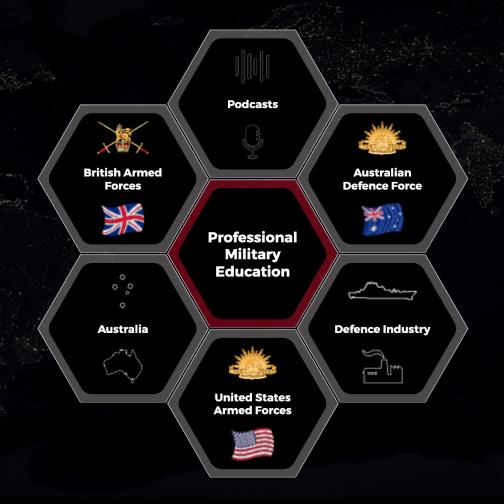
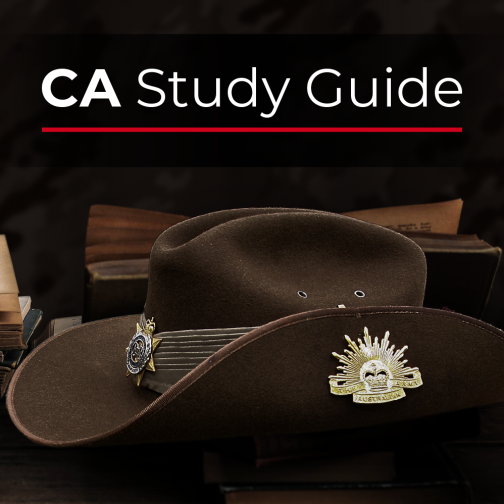

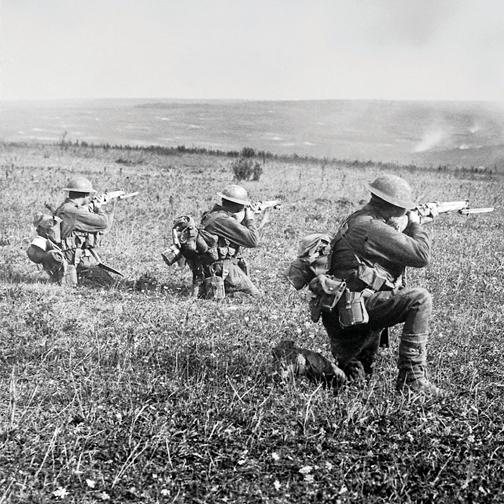
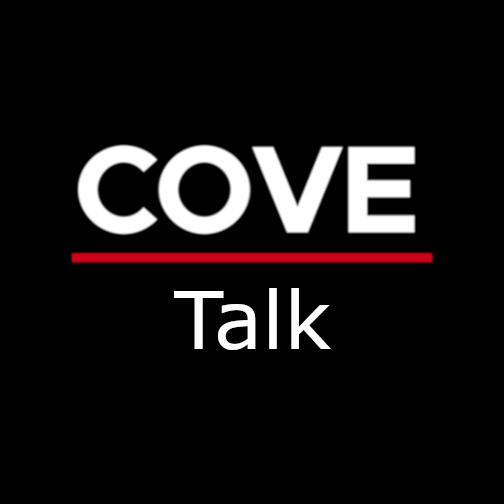




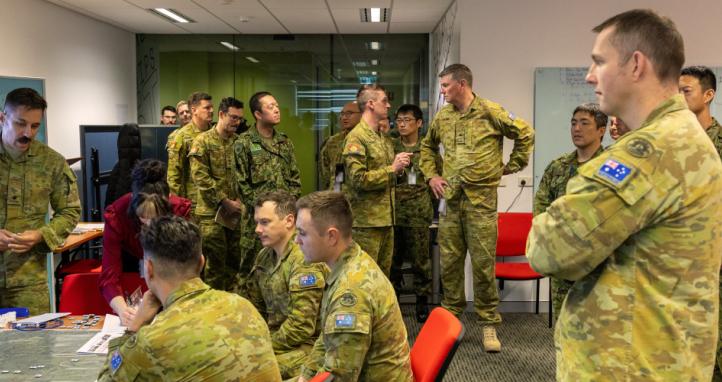
Any training role, regardless of your rank, is not nebulous. It teaches you aspects of leadership, character development and broadens your technical understanding of subjects through instructing. I believe that captains should be doing this in their corps school houses, where they will gain invaluable experience in their corps role. Many focus on opportunities outside of their corps school, which I concede, can have less of an impact on technical proficiency as a sub unit commander.
Headquarters roles are key for sub unit commanders to understand where they fit in a formation and understanding their higher commander’s intent when employed as a sub unit commander. My personal opinion is that the best experience is gained by a young captain from a brigade headquarters. Alas, we do not have enough positions for everyone to serve in a brigade headquarters.
Corps specific experience is not only gained in a battalion. It is gained from being in the regimental environment which can include a battalion or regiment, brigade or corps specific school houses. just because an officer is outside of a battalion or regiment does not mean they are outside their corps role.
Your second question “How can you expect these OCs to have credibility with those they lead?” is difficult to provide a concise answer, but I will try. Credibility is temporal and built with a sub unit as the team is forming, storming and norming. Soldiers should hold their commanders to high standards. Sub unit commanders must work hard at their role in their sub unit. My opinion is that a well-developed sub unit commander – regardless of where the experience comes from – will build credibility. Our system for training officers relies heavily on experience gained over your time in rank, not just in one unit. I have already described how this experience can be gained. I can confidently say that I have seen many very good sub unit commanders created by the Army system. The system is not perfect, but it does create very good sub unit commanders. It is incumbent upon all captains who wish to command a sub unit to get the most from their experience and contextualise it to be a more effective sub unit commander.
Your indictment on the organisation that less than 50% of sub unit commanders, in your opinion, is alarming. I suggest you may want to qualify this statement in the future by providing your assessment of why you believe they were less effective in your opinion. Our individual judgment of a leader is always subjective and deeply personal regardless of how much experience we have. I commend to you the novel “The Caine Mutiny” by Herman Wouk.
Finally, “Are we training to fight or to equip the ACT bureaucracy?” My answer is that we train to fight. The foundational experiences for LTs and CAPTs provide them the skills, knowledge and attitudes, to equip them to for sub unit command. No one trains to “equip the ACT bureaucracy”, by which, I assume you mean to be a staff officer in Canberra.
Thank you for your comments and viewpoints. I appreciate your passion on this subject and the candour you have shown in providing this forum with your thoughts.